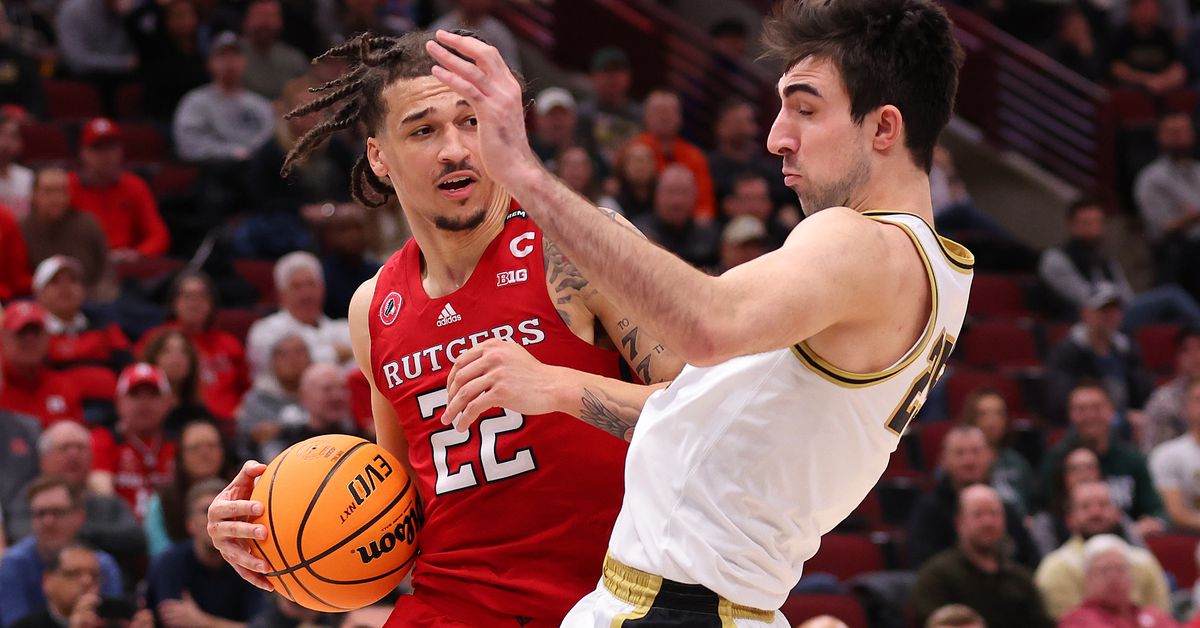Sports
The Death of the Charge in College Basketball – Hammer and Rails

Filed under:
The NCAA and its Rules Committee are on a crusade against the charge call. Why? Is it good for the game?
In terms of officiating, “Point of Emphasis,” is a phrase that is used ad nauseam by commentators in football and basketball alike these days. It’s usually used in reference to a type of violation or foul that a league, for whatever reason, tells officials they want called more, less, or differently than what it has been called in the past. The reason for the change can vary greatly, ranging from player safety, to watchability, to one egregious instance of misjudgment that causes widespread outrage.
Regardless of why these points of emphasis are put in place, the outcome is often the same. The plays are over-officiated for that particular season, then by the time one or two years have passed, they often return to being officiated almost the same way, as though they were never “emphasized” in the first place (see the hook-and-hold in basketball, or reviewing pass interference calls in the NFL).
This years point of emphasis, however, is another chapter in a long story of those in the seats of basketball power doing whatever they can to eliminate a certain play from the game entirely — the charge.
The first step in eliminating the charge from the game came in 2009, when the NCAA established that a charge could not be drawn if any part of the defender’s body was directly underneath the rim. This was obviously a ridiculous rule considering officials were left to do their best to guess whether the player was under the rim or not. Although it made no sense in practice, it set a precedent. The NCAA was tired of charges and they were prepared to do something about it.
This was followed up just two years later by adopting the more clearly defined “restricted area” from the NBA. This is the 3-foot semicircle in the paint inside of which a defender cannot take a charge. This made it a lot harder to get in front of a driving ball handler in time from good help side position, and quickly reduced the number of attempts to draw charges in college basketball.
But over a decade later, the higher-ups have decided that still wasn’t enough. And thus, the newest rule change and this year’s point of emphasis was born. The new rule states that, in order to take a charge, a defender has to have both feet set in legal-guarding position prior to the ball handler planting his foot before takeoff. Previously, he just had to be set before the ball handler was airborne.
Now I know what you’re thinking. “That’s such a small distinction, the time difference between those two things is just a fraction of a second! It’s hardly a change at all!” Well I’m here to tell you, you’re right. The distinction between those two moments in time is so small, that an official could never be expected to consistently discern between them in real time. But that’s the point.
The time-distinction is so small that without replay review, it’s basically a guessing game. But by arbitrarily moving the deciding moment slightly earlier, they are effectively instructing officials to favor the block call over the charge more. Are they actually calling more blocks? Can’t say for sure. But obviously coaches think they are because it’s not difficult to tell that teams have all but stopped attempting to draw charges this season.
The question is, is it good for the game? I don’t know if I have a really good answer for that. The plus sides are obvious.
For one, the flopping. Dear god, the flopping. No one likes a flop. It’s infuriating when your opponent gets away with it, and even when it’s your team that does, all you can do as a fan is sheepishly smile and accept the stolen rewards. Everyone hates flopping. But not all charges are flops, and to even suggest that they are would suggest a fundamental lack of understanding of the physicality of a basketball game. That’s not to say that charges are unsafe though. Because while it is a play that involves significant contact, it’s not any more unsafe than a player lowering his shoulder and driving to the rim with reckless abandon knowing that no one will be there waiting for him to punish him for his foolishness.
The main benefit of legislating the death of the charge, however, is that it takes away a critical subjective call that the officials have to make. Think back to the Purdue-Indiana game in Bloomington in 2017. At a critical juncture in the game, a driving Thomas Bryant lowers his shoulder and sends Caleb Swanigan to the floor. At that moment, the far side official emphatically calls a charge, while the baseline official seems to reluctantly call a block. They get together and come to, what still to me seems like one of the worst cop-outs in officiating history, and call both players for fouls, fouling them both out of the game.
But can you really blame them? The difference between a block and a charge is so small and so subjective, that two officials saw the same exact same play differently. For a call that is so tight, the impact is massive, and in an ideal world, officials should play as little a role as possible in determining the outcome of a game. You can’t argue that this is definitely a step toward that ideal.
However, I can’t help but feel not enough attention is drawn to what we lose. The charge is one of the most electric plays in basketball. When I played basketball in high school, our coach Shawn Nevill specifically instructed us to get excited and rally around a player who took a charge, helping him to his feet and letting him know we appreciate what he did for the team. After all, taking a charge is widely considered the most selfless thing a player could do for his team, and why shouldn’t it be? Taking a charge, one that isn’t a flop, hurts. But when it works, it’s arguably the best possible scenario for a defense, creating a turnover and sticking the ball-handler with a personal foul in the process. It’s a huge momentum swing, and everyone on the court, in the stands, or watching at home knows it. Thats why when it happens for your team, it’s a uniquely awesome moment. I mean think about it. Have you ever seen a player take a charge and not let out an elite battle cry? I sure haven’t.
The question we have to ask ourselves is, is our generally unified desire for officials to have as little impact on games as possible worth giving that up? Is it worth never getting to see guys like Grady Eifert or Sasha Stefanovic stepping in front, taking one for the team, and then letting loose the world’s hardest fist pump? I don’t know. It’s not a question that’s as straightforward for me as it seems to be for the NCAA. They don’t want the charge to be a part of the game anymore, and they’re willing to go to great lengths to have it gone. And even if I can see why, it still makes me a little sad. The charge is — or was — one of the last remaining beacons of pure effort left in the game today. And I just hate the idea of losing the opportunity to see my future kids get to enjoy the triumph of having their teammates rush to scoop them off the floor after they put their bodies on the line for their brothers. I know I did.
GAMBLING PROBLEM? CALL 1-800-GAMBLER (1-800-426-2537) (AZ/CO/IA/IL/IN/KS/KY/LA/MD/ME/MI/NJ/OH/OR/PA/TN/VA/WV/WY), (800) 327-5050 or visit gamblinghelplinema.org (MA). Call 877-8-HOPENY/text HOPENY (467369) (NY).
Please Gamble Responsibly. Call 1-800-522-4700 (NH), 888-789-7777/visit ccpg.org (CT), or visit www.1800gambler.net (WV).
21+ (18+ KY/NH/WY). Physically present in AZ/CO/CT/IL/IN/IA/KS/KY/LA(select parishes)/MA/MD/ME/MI/NH/NJ/NY/OH/OR/PA/TN/VA/WV/WY only. Void in ONT. Eligibility restrictions apply. See terms at draftkings.com/sportsbook. On behalf of Boot Hill Casino & Resort (KS).









